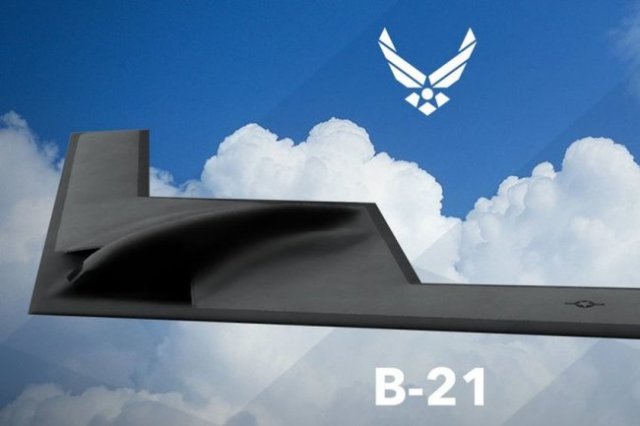The US Air Force has published a new image of a promising B-21 Raider strategic bomber. The aircraft is depicted in the air against the background of Edwards Air Base, where it is planned to start testing the first flight prototype in 2022. The new picture generally corresponds to the two previous official images of the B-21, but there is also a significant difference.
A B-21 Raider nuclear bomber with a strange window and the evolution of its cockpit. Photo: https://t.co/dw4x8QMlWd pic.twitter.com/4qg85qSAWL
— Ivan O'Gilvi (@o_gilvi) July 8, 2021
There is a new side window in the cockpit. In the picture, it is present on the left side of the Raider - it is logical to assume that the same is available on the right. The window has a strange curved shape and is located below the level of the pilot's vision, its purpose is unclear. Curved glass with an intricate shape and a large area is difficult and expensive to manufacture. It is even more difficult to maintain the correct shape of the joint between them, so as not to worsen the stealth characteristics of the aircraft, writes The Drive.
In previous renderings, the B-21 cabin had two large windshields, while the pilots of the B-2 Spirit bomber developed by the same company Northrop Grumman can look out of four windows. The new image still does not say anything about air intakes, flat nozzles and other details that are key to low visibility.
It remains to guess about the future of the aircraft by the shape of its "beak" -more acute compared to the predatory curved nose of the B-2. It is known that the B-21 will be smaller and cheaper than the Spirit, but it will retain a sawtooth trailing edge, which significantly worsens its stealth characteristics. At one time, this option was added to the B-2 to give it the ability to fly at low altitudes. Due to the development of air defense of a potential enemy (read, Russia and China), American designers did not have much hope for stealth and, like half a century ago, preferred to move the battlefield from the stratosphere to the ground.
Anton Valagin

